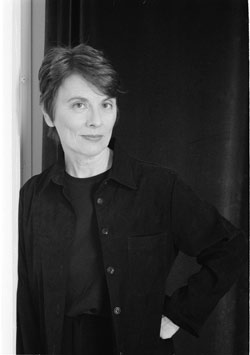SB: One of the most stimulating essays in the book is prompted by Sylvia Path’s Daddy, which you

argue is “one of the strongest poems ever written by a woman”. You convincingly contend that Plath’s skill saves a poem written by a New England cheerleader that appropriates the experience of the Holocaust from descending into bathos. But you also state that “the poem is so extreme that nothing can be built upon it. Plath has had many imitators, but she may have exhausted her style in creating it”. Those two sentences superficially seem contradictory–are you saying that the school of “confessional” poetry that takes Plath as its lodestar lacks any aesthetic credibility?
Camille Paglia: No, it wasn’t the school of confessional poetry per se that foundered, because its ultimate, magnificent achievement remains Robert Lowell’s Life Studies (1959), which inspired Plath. (A fine poem from that book is included in Break, Blow, Burn.) What I meant was that the accusatory, victim-obsessed, male-bashing style of feminist writing that began with “Daddy” never got beyond Plath’s great poem. The reason for it is that Plath was schooled on canonical writers of both genders and brilliantly drew from them all. Feminist literature got off track when it became ghettoized. I feel very fortunate that my own independent feminism began in the early 1960s, before the current women’s movement started, so there were no impediments or discouragement to my studying and admiring great male authors and artists.
SB: Your willingness to juxtapose both high and low culture marks you as an American original. Even Susan Sontag, who turned cinema criticism into an artform, praised the works of European filmmakers rather than the American B-movies that inspired them. You are considerably more eclectic. But what are the limits of this creative clash between high and low? For example, in your discussion of Shelley’s Ozymandias you compare the poet’s technique to a cinematic tracking shot. But is it, let’s say “proper” to discuss one art form in the language of another, one that didn’t exist for another hundred years?
Camille Paglia: My point of view on life is cinematic, as is abundantly clear from my prior books, not only my study of Alfred Hitchcock’s The Birds for the British Film Institute (1998) but Sexual Personae (1990), where I argue that the cinematic “Western eye” was born in ancient Egypt. Others beside myself have noted how Plato’s allegory of the cave in the Republic strangely prefigures a movie screen and theater. The cinematic nature of Western perception, intellect, and psychological projection is one of the major, motivating, and of course controversial hypotheses of my work.
Beyond that, my style of cultural commentary (as I explain in the “Cancelled Preface” to Sexual Personae printed in Sex, Art, and American Culture) is to juxtapose and cross-fertilize across centuries and genres. My chapter on Shelley in Sexual Personae identifies him as an Apollonian idealist and places him in the artistic line of ancient Greek sculptors, with their highly cinematic, sharp-contoured images.
My theoretical approach is militantly interdisciplinary: I believe that all the arts should be knitted together. It’s my recipe for future creativity in the arts. We will never get important new artists again if we keep feeding students a sterile diet of cynical postmodernism.
SB: Finally, your latest publication adds to an already prodigious intellectual stockpile. Yet Camille Paglia is also a celebrity, noted for her acerbic interventions into the public forum. I’m wondering whether you think there are any risks for an intellectual becoming “too involved” in popular culture? For example, last year Germaine Greer was seen to have forfeited much of her credibility by appearing in a “Big Brother” reality show. But can an intellectual’s ideas be devalued by the public acts of the person that formulated them?
Camille Paglia: I am a huge admirer of Germaine Greer and consider her a paragon of the erudite and fiercely combative feminist intellectual. The exclusion of her work and life from the overwhelming majority of women’s studies curricula in the U.S. is an absolute outrage.
Over the past fifteen years, I have participated in (as a presenter or contributor) a huge number of TV documentaries in North America and Europe and have also provided self-satirizing cameos for several independent dramatic films. As a columnist for Salon.com from its inaugural issue in 1995, I was also a pioneer of Web journalism. I am a professor of media studies as well as humanities: this practical and technical experience in performance and production has been invaluable to my understanding of the modern communications revolution.
However, I don’t think “Big Brother” was a desirable format for Greer or any other intellectual–it was too chaotic, too stupid and pointless, and the conditions were positively squalid. Nevertheless, I admire her spunk for trying it. Why shouldn’t a writer wade into the shallows and muck just for th
e fun of it? Norman Mailer was having a ball doing that when I was in college.
Greer is not simply a thinker or primly careerist academic; she’s a bold and physically active role model, a truly paradigmatic modern woman. The essence of the rebellious 1960s, in which both she and I remain grounded, was improvisation, prankishness, an experimental attitude toward life. Greer’s got my vote for the premiere feminist writer after Simone de Beauvoir, and nothing she does on TV or anywhere else will change that!